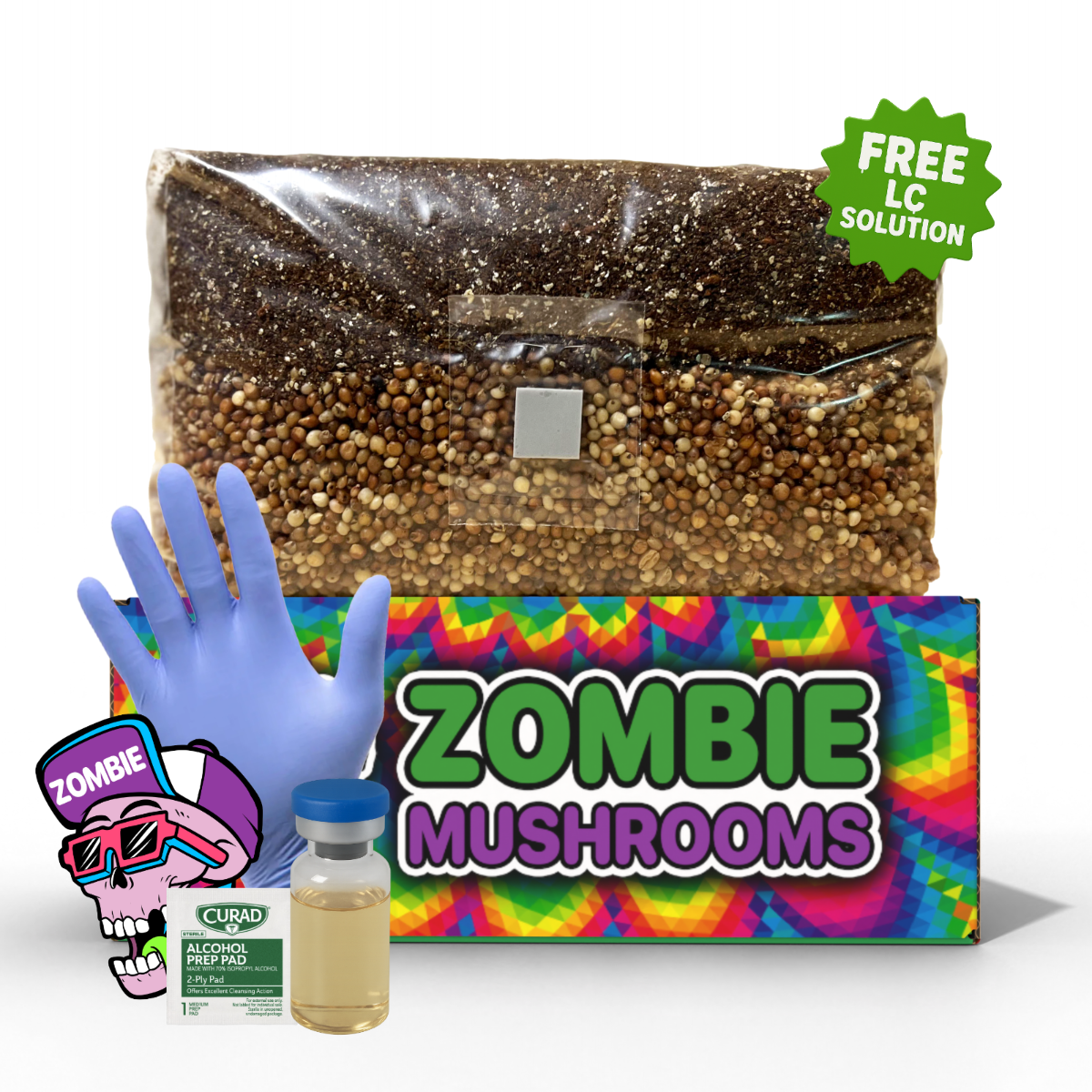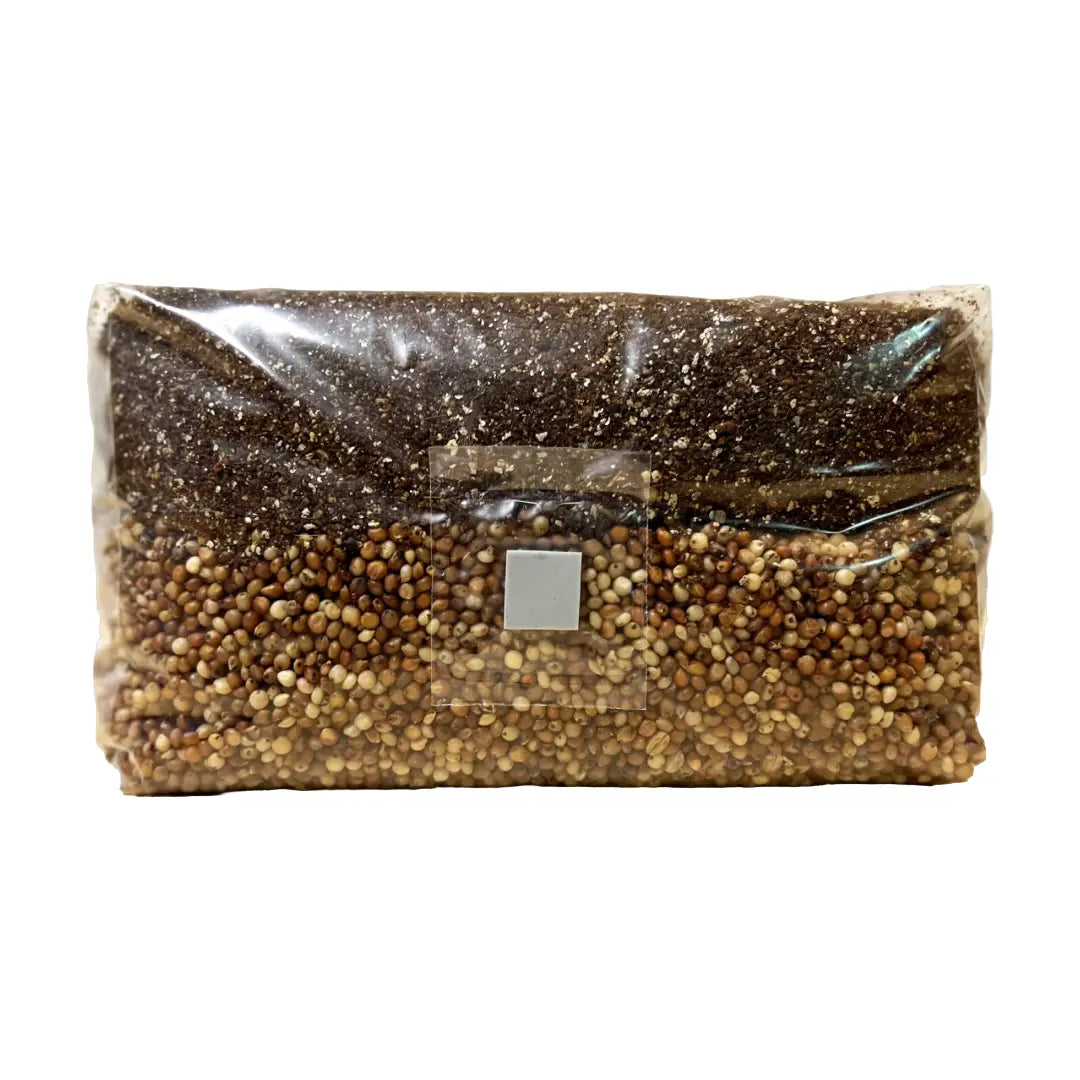⬇️ Prefer to listen instead? ⬇️

- 🧠 Erinacine A consistently stimulates NGF production, improving neural growth and function.
- 🧬 Studies show erinacine A-enriched mycelia reduce amyloid plaques and protect brain cells in Alzheimer’s models.
- 💊 Parkinson’s research indicates erinacine A restores dopamine neurons and combats neuroinflammation.
- 🧪 Animal studies report doubled NGF levels and memory improvements with erinacine-rich supplementation.
- ✔️ Long-term toxicity studies found erinacine A safe, even in high-dose animal trials.
Erinacine A and Brain Function: Can Lion’s Mane Mycelia Boost Cognitive Health?

What is Erinacine A?
Erinacine A is one of the most studied neuroprotective compounds found in Lion’s Mane mushrooms (Hericium erinaceus). Known for its ability to stimulate nerve growth factor (NGF), this compound is linked to improved memory, faster neuron repair, and long-term brain resilience. Researchers are investigating Erinacine A brain benefits, from supporting healthy cognition to potential roles in Alzheimer’s disease research. For growers and enthusiasts, cultivating Lion’s Mane in mushroom grow bags offers an accessible way to explore this fascinating medicinal mushroom firsthand while science continues to uncover its therapeutic promise.
Hericenones are in the mushroom’s cap. But erinacines are only made in mycelial tissues under certain growing conditions. Erinacine A’s most notable quality is its ability to support nerve growth. Lee et al. (2000) found that erinacine A helps astrocytes release much more Nerve Growth Factor (NGF). These are important cells that support the central nervous system. In the study, NGF production greatly increased in just 48 hours at a concentration of 1.33 μg/mL. This means it has a strong, direct effect on how new nerve cells form.
Besides stimulating NGF, erinacine A also seems to have neuroprotective and anti-inflammatory activities, and activities that support acetylcholine. These three things are very important for keeping the brain healthy and strong against problems from aging or disease.

Fruiting Body vs. Mycelia: What’s the Difference?
There is a basic difference in mushroom biology. This is especially true when we talk about supplements and using them as medicine. It is the difference between the fruiting body and mycelium of Hericium erinaceus. This division also tells us about where to find and get erinacine A.
-
Fruiting Body (Mushroom Cap): This is the part you usually see and eat. It has compounds like hericenones. Some of these have only a weak ability to make NGF. But hericenones don't always work the same way. Also, many tests show they are absorbed less well.
-
Mycelium (The Underground Network): Erinacines, including erinacine A, are found in the mycelium. Unlike fruiting bodies, mycelium must be grown on purpose. This is done by using either liquid fermentation or solid substrate methods.
Science comparisons suggest erinacine A is much better at stimulating NGF production than hericenones. Most lab studies about NGF production or tests of better brain function use extracts made from the mycelium, not the mushroom cap. This has important meaning for choosing supplements and what you want to grow. If you want better brain health, then mycelium-based extracts that have more erinacine A are what you should look for first.

How Erinacines Help Support Brain Health
Erinacine A primarily works through NGF stimulation, a process critical for the growth, repair, and maintenance of neurons. Higher NGF activity helps neurons form new connections, improving memory, learning, and brain plasticity. This mechanism also makes erinacine A a promising candidate in the development of herbal nootropics, since it encourages natural brain support rather than overstimulation. By promoting resilience in nerve cells, erinacine A could play a major role in protecting the brain from age-related decline and supporting long-term cognitive health.
1. Stimulating NGF Production
NGF plays a key role in helping neurons grow, change into different types, stay healthy, and survive. When NGF levels go down with age or because of brain diseases, brain function, memory, and mood often get worse. Erinacine A makes astrocytes produce NGF. This starts activity that helps new neurons grow and protects them.
2. Promoting Neurogenesis
Studies before human trials show erinacine A helps new neurons form. This is called neurogenesis. This process is important for getting better after injury or trauma. And it is also important for everyday learning and how we remember things. These are key for how well our brain works.
3. Enhancing Synaptic Plasticity
Erinacine A seems to strengthen how brain connections can change. This is the brain’s ability to adapt and make new connections. This is a big part of neuroplasticity. It is very important for learning, being creative, and managing emotions.
4. Supporting Cholinergic Function
In Alzheimer’s models, erinacine A increased acetylcholine levels. This suggests it might work in ways that help memory. Acetylecholine helps with attention, focus, and forming memories. These systems often get worse because of age or disease.
Together, these ways of working suggest that erinacine A does more than just protect existing brain parts. They also actively make brain pathways work better and rebuild them.

How Erinacine A is Produced from Mycelium
Unlike many bioactive compounds, erinacine A is concentrated in the mycelium of Lion’s Mane mushrooms, not in the fruiting bodies. To obtain it at scale, scientists often use submerged or solid-state fermentation methods, though yields vary depending on strain and conditions. Cultivation environments, substrate quality, and growth medium all influence erinacine A output, which is why controlled setups are essential for consistent production. For home cultivators, growing Lion’s Mane using sterile grow bags provides a practical way to explore this mushroom’s potential while minimizing contamination risks.
1. Submerged Fermentation
This method means growing mushroom mycelia in liquid with many nutrients, in bioreactors or deep tanks. It allows for a lot of control over oxygen levels, temperature, and pH. These factors are very important for getting the most erinacine. Submerged fermentation can make a lot of erinacine A, which is good for making supplements.
2. Solid-State Fermentation
Here, mycelium is grown on a solid base like grains (millet, brown rice) or sawdust. This technique is like how mushrooms grow in nature. It also lets hobbyists grow mushrooms that help performance at home. By adding spawn rich in mycelium to the bases, and keeping the best humidity, temperature, and darkness, you can grow mycelium with a lot of erinacine well.
Companies like Zombie Mushrooms now offer home growing kits made for growing mycelium with more erinacine A. These kits are designed to make growing mycelium easy to do, even on kitchen counters. They use strains and bases that are best for getting a lot of NGF-stimulating compounds.

Preclinical Evidence of Neuroprotective Benefits
Before erinacine A can be suggested as a medical treatment, it has to pass many research stages. So far, results in studies done before human trials—especially in mice with Alzheimer's and Parkinson’s disease—have been very good.
Alzheimer’s Disease Models
In an important study by Tzeng et al. (2016), mice that were changed genetically to get amyloid-beta plaques were fed H. erinaceus mycelia with more erinacine A every day for 30 days. These plaques are a key sign of Alzheimer’s disease.
The main findings were:
- 📉 A lot fewer β-amyloid plaques in the hippocampus.
- 🧠 They did better in maze-based memory tests.
- ⚡ More acetylcholine in the brain.
These effects suggest erinacine A might not only ease symptoms but also slow the disease as it develops in the body.
Parkinson’s Disease Models
Chang et al. (2013) showed that erinacine A had strong protective effects in a mouse model of Parkinson’s disease. In this model, dopamine neurons were destroyed on purpose. The findings were:
- 🔬 Dopamine neurons were saved in the substantia nigra.
- 🔥 Less inflammation (TNF-alpha, microglial activation).
- ⚙️ They kept motor skills better.
These ways of working address the main causes of Parkinson’s. This makes erinacine A a candidate for slowing the disease or helping with recovery.
NGF Level Enhancement
In another study by Wong et al. (2016), lab animals given mycelium with more erinacine A had almost double the NGF levels compared to control groups. This confirmed that erinacine A is one of the strongest NGF promoters found so far.
These findings are from studies before human trials. But they are the basis for more study into erinacine A’s ability to treat and to fight aging in the brain.

Erinacine A and Neurodegeneration
Erinacine A’s many ways it protects the brain make it a promising tool in fighting brain diseases that get worse over time. Let’s break down how it may influence three primary conditions:
1. Alzheimer’s Disease
- ❌ Reduces amyloid-beta buildup, making fewer harmful plaques.
- 🧬 Increases NGF and acetylcholine. Both of these help with good memory and thinking.
- 🛠 Fixes problems with learning and memory in animal models.
2. Parkinson’s Disease
- 🔄 Saves dopamine neurons and keeps up dopamine levels.
- 🚫 Reduces brain inflammation, which might slow the disease from getting worse.
- 🧪 Improves small muscle movements in experimental models.
3. Stroke and Neural Injury Recovery
Erinacine A may also help with stroke recovery through strong anti-inflammatory and healing methods. By improving the repair of brain connections and increasing NGF levels, erinacine A could help rebuild neural connections and keep function after a lack of blood flow.
Human studies are still happening. But the actions through many ways listed above give a good reason to include erinacine A in long-term brain health plans.
Safety and Daily Use: What the Research Says
An important thing for any supplement’s usefulness is how safe it is. Toxicology studies done by the National Laboratory Animal Center in Taiwan in 2018 showed that Hericium erinaceus mycelia with more erinacine A did not build up harmful effects, even when given in very high amounts:
- ✅ Up to 3,000 mg/kg in rats and 1,200 mg/kg in dogs, and no bad effects were seen.
- ✅ No harm to the liver, kidneys, heart, or stomach.
- ✅ No side effects that cause cancer, genetic changes, or behavior problems were found.
These findings show that erinacine A supplements can be used for a long time with a doctor’s advice. For beginners, low-dose daily supplements are a good starting point. Higher doses can be used under medical supervision or in clinical trials.

Why Mushroom Growers and Supplement Users Should Pay Attention
For both mushroom growers and supplement users, looking at erinacine A opens a new area for brain health at home.
For Growers
Those growing Lion’s Mane for its ability to boost brain power should:
- ⚗️ Choose strains known for high erinacine A production.
- 🔬 Use solid-state fermentation equipment or submerged cultures.
- ♻️ Make the best light, temperature, and base to help the mycelium grow more than the cap.
Zombie Mushrooms’ grow kits provide all needed parts. These include a clean growing base, proven strains, and step-by-step instructions for beginners and advanced growers alike.
For Consumers
Choosing supplements wisely is important. Look for these things:
- Labels that say "mycelium" and "erinacine A-enriched".
- Tests by other companies for how pure it is and how much erinacine A it has.
- Clear information about the fermentation and how it was taken out.
Do not buy supplements just labeled generally as “Lion’s Mane” unless they say it comes from mycelium or how much erinacine it has. Many cheaper products use only the mushroom cap.

Research Limitations and the Road Ahead
Erinacine A shows great promise. But the research around it is still being worked on. Most studies are done before human trials or on animals. And science needs more study through:
- 🧑🔬 Double-blind, placebo-controlled human clinical trials.
- 🥄 Studies to find standard doses for different groups of people.
- ⏳ Long-term information on brain health results over months or years.
As of now, erinacine A is a promising option in the growing field of natural nootropics. It offers hope, but there are no set treatment plans yet.

The Mushroom at the Frontier of Cognitive Health
Hericium erinaceus has changed from being a traditional food to a modern superfood. It has important effects on brain health. A main reason for this change is erinacine A. This is a strong, natural compound with known effects on NGF, nerve repair, and brain protection.
From stopping Alzheimer’s to fighting Parkinson’s and getting better after injury, its potential for medical use keeps showing itself. If you are a health enthusiast who wants an advantage, or a biohacker who wants to grow your own supplements, Lion’s Mane mycelium with more erinacine A could be the next big thing in brain health.
Ready to grow your own brain-boosting mushrooms? Look at DIY grow kits like those from Zombie Mushrooms. They are made to help you get the brain benefits from nature, right from home.
FAQ
-
What are the main brain benefits of erinacine A?
It supports neuron growth, improves memory, enhances brain plasticity, and may slow neurodegenerative decline. -
How does Lion’s Mane erinacine A stimulate NGF?
By activating nerve growth factor synthesis, erinacine A helps neurons survive, repair, and form new connections. -
Is erinacine A linked to Alzheimer’s disease research?
Yes. Animal studies show reduced beta-amyloid buildup, better memory performance, and neuroprotective effects. -
How is erinacine A different from other neuroprotective compounds?
It is natural, NGF-specific, and supports long-term brain resilience, placing it among promising herbal nootropics. -
Where is erinacine A found in Lion’s Mane mushrooms?
Erinacine A is found in the mycelium, not the fruiting body, making specialized cultivation or extracts necessary for higher yields.
Citations
- Chang, C.-H., Chen, C.-C., Chen, Y.-S., & Lin, Y.-S. (2013). Neuroprotective effects of erinacine A-enriched Hericium erinaceus mycelia in MPTP-induced Parkinson’s disease model. NeuroToxicology, 39, 1–8.
- Kawagishi, H., Zhuang, C., Nakamura, T., Nozawa, K., & Ito, K. (1994). Nerve growth stimulators from Hericium erinaceum. BioScience, Biotechnology, and Biochemistry, 58(4), 660–663.
- Lee, E. W., Shiao, Y. J., & Chen, C. F. (2000). Increase of nerve growth factor secretion by erinacine A from Hericium erinaceum mycelia. International Journal of Medicinal Mushrooms, 2(1), 83–89.
- National Laboratory Animal Center, Taiwan. (2018). Three-month toxicological assessment of erinacine A-enriched mycelia in rats and dogs. Report for safety evaluation.
- Tzeng, T. C., Lu, H. J., Liou, C. J., & Liu, C. S. (2016). Amyloid plaque reduction through erinacine A in Alzheimer transgenic mice. Journal of Alzheimer's Disease, 50(3), 825–834.
- Wong, K. H., Kanagasabapathy, G., & Naidu, M. (2016). Neuroregenerative effects of erinacine A in cerebellar neurons. Neurochemistry International, 95, 45–54.



